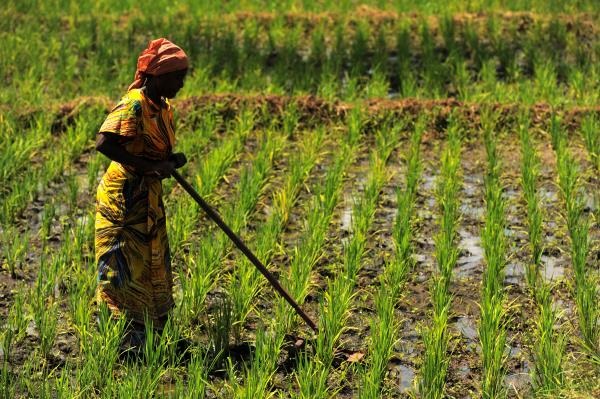
4 July 2016, Rome - The recent period of high agricultural commodity prices is most likely over, say the OECD and FAO in their latest 10-year Outlook. But the two organisations warn of the need to be vigilant as the probability of a major price swing remains high.
The OECD-FAO Agricultural Outlook 2016-2025, published today, projects inflation-adjusted agricultural commodity prices will remain relatively flat overall in the coming decade. However, livestock prices are expected to rise relative to those for crops.
As incomes improve, especially in emerging economies, demand for meat, fish and poultry will demonstrate strong growth. This creates additional demand for feed, particularly from coarse grains and protein meals, causing their prices to rise prices relative to food staples such as wheat and rice.
Globally, the increased demand for food and feed for a growing and more affluent population is projected to be mostly met through productivity gains. Yield improvements are expected to account for about 80 percent of the increase in crop output.
According to baseline analysis made in the Outlook, under a "business as usual" scenario -- in which agricultural productivity grows at the current trend rate and no major action is taken to reduce hunger -- projected growth in food availability would result in a reduction in the number of undernourished people in the world from around 800 million now to under 650 million in 2025.
The analysis indicates that in sub-Saharan Africa the rate of undernourishment would decline an estimated 23 to 19 percent -- but because of rapid population growth the region would still account for a rising share of the world's population suffering from hunger.
This implies that without decisive steps to move away from business-as-usual, hunger would not be eradicated by 2030 - the global target recently adopted by the international community - and that decisive action is needed.
Focus on sub-Saharan Africa
This year's Outlook includes a special focus on the prospects and challenges facing agriculture in sub-Saharan Africa.
The rise of the middle class, rapid urbanisation, as well as increased commercial interest in Africa's resources and farmland, will all shape the sector's development. As the region faces rapid population growth, agriculture will continue to be the single largest source of employment for many young people.
The Outlook foresees a further increase of food imports into sub-Saharan Africa, because demand for food is expected to grow at more than 3 percent over the coming decade, while total agricultural production is projected to rise by only 2.6 percent a year, despite improvement in productivity.
Policymakers will need to take steps to further boost productivity, including promoting the faster adoption of technology, improving access to markets, and better integrating smallholder producers into value chains.
Key players dominate food trade
The Agricultural Outlook says that the bulk of all commodity exports will continue to originate in just a few countries.
Imports, however, will be far less concentrated among countries, although China is projected to remain a critical market for some commodities, in particular soybeans. OECD and FAO emphasise the importance of well-functioning markets in enabling food to flow from surplus to deficit regions and improving food security.
At the Outlook's launch in Rome, OECD Secretary General Angel Gurría said: "Although we are now witnessing a period of lower agricultural prices, we need to remain alert as changes in markets can take place rapidly.The key priority for governments in the current context is to implement policies that will increase agricultural productivity in a coherent and sustainable way. Getting our agricultural policies right is critical to end hunger and undernourishment in the decades to come."
"Significant production growth is needed to meet the expanding demand for food, feed and raw products for industrial uses, and all of these have to be done in a sustainable way," said FAO Director-General José Graziano da Silva. "We are optimistic that most of that future demand for agricultural commodities will be mainly met through productivity gains rather than expansion of crop area or livestock herds," he added.
Other findings from the report include:
-Global agricultural trade is expected to grow by 1.8% per annum in volume during the next ten years, compared to 4.3 percent per year over the past decade.
-Food consumer prices are expected to be less volatile than agricultural producer prices over the coming decade.
-In developing countries, human sugar consumption is expected to rise by 15 percent per capita and that of dairy products by 20 percent over the projection period.
-After stronger gains in recent years, crop production is projected to increase at around 1.5 percent a year globally.
-In South and East Asia, agricultural output is expected to expand by 20 percent over the next decade.
-In Latin America, soybean cultivation is projected to drive most of the estimated 24 percent increase in crop area over the next 10 years.
Further details about the Outlook can be found at www.agri-outlook.org.